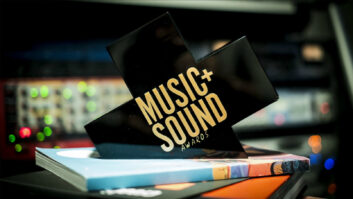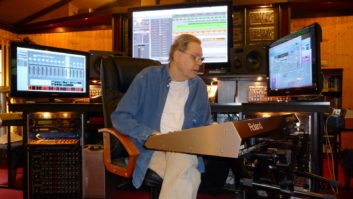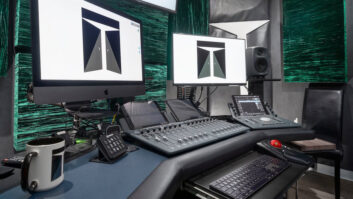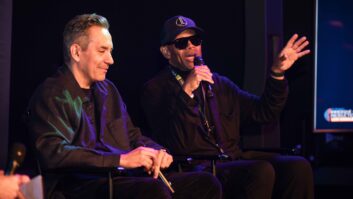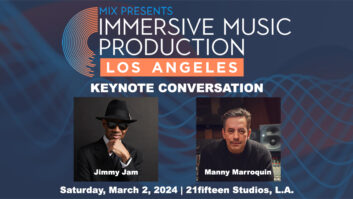Gingger Shankar burst onto the international music scene in 2004, with her emotionally compelling performances and collaborative work on the film score for The Passion of the Christ, which received an Oscar nomination. Hailing from an acclaimed, musically influential family that spans three generations and two continents, Shankar has gone on to compose several film scores and is the only female in the world to have mastered the 10-string double violin: an instrument that covers the entire range of an orchestra’s double bass, cello, viola and violin.
Her new album, Beautiful Imperfections, due this fall, displays her versatility as a performer while showcasing her strengths as an opera-trained vocalist, world-class violinist and multimedia-based performer.
ON MOVING TO THE FRONT BURNER:
My friend Sarah DeAun and I started writing these songs a couple of years ago and I really loved them. I wanted to make a record, but at that point, I was doing film work. So we would work on a few songs, then we would take a break; then we would do more songs, and then I would do a film. Finally, last year, we buckled down and decided to really start working. While we were working on the record, I had a chance to meet Linda Perry and work with her on a couple of songs, which was incredible because I have been such a big fan of hers for so long. At the same time, I started working with some really incredible producers. For example, Devin Parker came along and ended up producing the overall arc of the record, and Daniel Crean from The Semi Precious Weapons came on board and produced a couple of songs. When the record finally happened, it happened very quickly. We were in the studio for a couple of months and we just finished mastering the record in April.
ON PIVOTING FROM FILM:
The film world is very much based on picture, so how I approach recording a record is very different. When doing a film score, it often calls for many different things: For example, you can do a jazz score, a pop score or a western classical score. But for your own record, you can do exactly what you want and leverage all your influences. So that is pretty exciting for me. There are so many different styles on this record. We have things that are a little bit more punk, and other things that are more dance oriented. I think I went into it thinking that everything needed to follow a certain style, but once we started writing, we realized that all the songs had a very nice flow to them but were not necessarily the same style.
ON SONG SHAPING:
A lot of the shaping of these tunes actually happened live. We would write the songs, and once we started to perform them, many things became apparent: This song works better at this tempo, another song works better as a punk song or an acoustic song. So a lot of the shaping happened there. Once we got into the studio, we noticed things like “This verse is too long,” or “This chorus needs to be this way.” More of the structural song changes occurred as a result of our live shows though.
ON CAPTURING THE VIOLIN:
It can be very difficult to capture the depth of the tone of the violin. If you’re not careful, it can just sound very tinny. When I am recording it in a hotel room or on my own in my studio, I always have my Apogee interface with me, and I record through that. Then I have all my settings setup in Logic, so when I hit record, I’m getting exactly the sound I am looking for. The best sound I ever got on my violin was while we were recording The Passion of the Christ at Abbey Road Studios. I am normally very picky about my sound, but when I heard the playback on the monitors, I said, “That sounds unbelievable. ”The sound that we got there is the ultimate benchmark for how I like my violin to sound.
ON TORCHBEARERS:
The overall arc of the album is about being a woman—and how important it is to be a strong woman. My true inspirations growing up were my mother and my grandmother. My grandmother was 18 when she starred in her first movie, and her acting career was over by her early ’20s. Instead of packing it up and saying, “Well, that didn’t work for me,” she completely reinvented herself. She studied as a vocalist and became one of the top classical vocalists in India. She had a spirit that never gave up, and the message I got from both her and my mother was “never complain.” The funniest thing was that in her late ’70s, for the first time after putting out more than 50 records, she was nominated for a Grammy. It was really sweet to see that, because she was always really humble. None of us women in the family would be here if it weren’t for the original torchbearers like my mother and grandmother.
ON INNOVATION AND REINVENTING:
For me, because I’ve worked in the film, virtual reality and multimedia worlds, any music performance has to be really interesting. With this record, I want to be more in the multimedia space and perform in museums, theaters, at film festivals and other places. When you think of the whole experience of audio, the visual aspect is so important now. If I go to a show, I am so much more interested in seeing a whole performance like that rather than just seeing a band standing there and playing. I think we are so past that now, and it is so important to give audiences a more complete experience. My goal is toper form this record all around the world with multi-screen projections and all different sorts of things.
